Monthly Archives: December 2018
 I’m not a huge fan of winter, but recently I saw something the mentioned how quiet it seems when it’s snowing, and I started thinking about the fact, that it really does seem quieter when it snows. I thought it must be some sort of illusion, or more likely, the lack of the Wyoming wind blowing, that made my world seem more quiet. Still, my curious mind had to find out exactly what the answer was. I’m not super into scientific experiments, but this seemed like a good one to check into. Maybe it was just me thinking about that, but maybe it wasn’t. Maybe other people wondered about it too.
I’m not a huge fan of winter, but recently I saw something the mentioned how quiet it seems when it’s snowing, and I started thinking about the fact, that it really does seem quieter when it snows. I thought it must be some sort of illusion, or more likely, the lack of the Wyoming wind blowing, that made my world seem more quiet. Still, my curious mind had to find out exactly what the answer was. I’m not super into scientific experiments, but this seemed like a good one to check into. Maybe it was just me thinking about that, but maybe it wasn’t. Maybe other people wondered about it too.
As it turns out, it wasn’t just me…and the world really is quieter when it snows. That isn’t something you really see when watching a blizzard on television, and maybe there are some exceptions to the rule, but the reality is that snow absorbs sound waves. When it’s snowing, there’s plenty of space between snowflakes, meaning that there is also less space for sound  waves to bounce around…so I’m not imagining it. The world actually gets more quiet when it snows. Bernadette Woods Placky, a meteorologist and director of Climate Central’s Climate Matters program says, “When snow falls, it does absorb some of the sound waves.”
waves to bounce around…so I’m not imagining it. The world actually gets more quiet when it snows. Bernadette Woods Placky, a meteorologist and director of Climate Central’s Climate Matters program says, “When snow falls, it does absorb some of the sound waves.”
To further add to the quiet, as snowflakes stack up, there is more space left between them, compared to the surface of liquids like water. “With all that space, sound is unable to bounce off snow as easily as it would off water,” Woods Placky says. As a result, the sound gets absorbed, and somewhat like the way a soundproof room absorbs the sound, so you can’t hear what is going on inside, the snow pulls the sound into itself, and we don’t hear it very well. Of course, things like less people outside and on the road also account for the quiet. Traffic stalls tremendously during and after a snowstorm, due to icy roads and the dangers it presents to  drivers. Many animals, especially birds, also aren’t out as much. They have to adapt to snowy weather that makes their environment colder and their food more difficult to find. They hunker down to conserve energy.
drivers. Many animals, especially birds, also aren’t out as much. They have to adapt to snowy weather that makes their environment colder and their food more difficult to find. They hunker down to conserve energy.
Whatever the reason for the quiet we hear during a snowstorm, I have always felt like it was a beautiful thing. I don’t like the cold, and I don’t like the icy roads, but just watching the snow, fall quietly to the ground, and listening to the quiet that it produces makes it would of those wonderful experiences that you have to slow down and take the time to notice, or you will never have the full peace that happens when the world gets quiet.
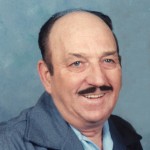 Time waits for no man, and it doesn’t slow down or stop while we grieve a loss. As a child and on into adulthood, it never occurred to me that I would live one single day without my dad. I can’t say why I thought that, because in retrospect, it was not really a logical way to think, but then are matters of the heart ever logical. It doesn’t matter if you are talking about romantic love or the love you have for parents or siblings. They should just never leave you, whether that is logical or not.
Time waits for no man, and it doesn’t slow down or stop while we grieve a loss. As a child and on into adulthood, it never occurred to me that I would live one single day without my dad. I can’t say why I thought that, because in retrospect, it was not really a logical way to think, but then are matters of the heart ever logical. It doesn’t matter if you are talking about romantic love or the love you have for parents or siblings. They should just never leave you, whether that is logical or not.
Nevertheless, as illogical as it seemed to me, my dad, Al Spencer went home to be with the Lord eleven years ago today December 12, 2007 at precisely 12:00pm. The world seemed so empty when we left the hospital that day, and I found myself wondering how it could be that the world and time kept moving when everything for my dad stopped at that moment. Again these were not the thoughts of a person in a rational state of mind,but rather a person who had just lost a beloved parent. I knew that my dad was in Heaven,because he had always believed in Jesus as his Saviour, but he was no longer here with us…his wife, Collene Spencer; daughters, Cheryl Masterson, Caryn Schulenberg, Caryl Reed, Alena Stevens, and Ally Hadlock; and their families, and that was what made the whole world…just wrong.
As the years go by…faster than any of us ever dreamed they would, we cherish the memories of our dad more and more,because they are all we have…because our dad and our mom are in our future now. My thoughts go back to the many times my girls, Corrie Petersen and Amy Royce and I had lunch at their house. It’s odd, I suppose that those lunches are what comes to mind, but they have been coming to my mind a lot these past 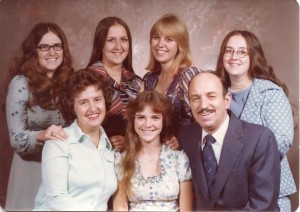 few days. I remember going over to their house at lunch. Mom would make her specialties, Stuffed Tomatoes or Chicken salad with Shoe String Potatoes. As we gathered at the table to eat, the conversation covered everything from our families to how our jobs were going. Mom and Dad didn’t care what we talked about, they just wanted to be a part of our lives. Mom and Dad were always all about family. They loved their kids, grandkids, great grandkids, and great great grandkids. They felt so blessed by the family they started beginning back in 1954. Family was all they ever wanted. Family was everything. I still can’t believe that my dad has been in Heaven for eleven years today. We love you Dad, and miss you very much. We will see you in Heaven one day.
few days. I remember going over to their house at lunch. Mom would make her specialties, Stuffed Tomatoes or Chicken salad with Shoe String Potatoes. As we gathered at the table to eat, the conversation covered everything from our families to how our jobs were going. Mom and Dad didn’t care what we talked about, they just wanted to be a part of our lives. Mom and Dad were always all about family. They loved their kids, grandkids, great grandkids, and great great grandkids. They felt so blessed by the family they started beginning back in 1954. Family was all they ever wanted. Family was everything. I still can’t believe that my dad has been in Heaven for eleven years today. We love you Dad, and miss you very much. We will see you in Heaven one day.

 My nephew, Barry Schulenberg has always been a hard worker. From the time he was a little boy, he worked hard to help his grandpa, Walt Schulenberg with anything he was working on. It didn’t matter what his grandpa was doing, Barry wanted to do it too. In fact, Barry once told his mom, Jennifer Parmely that he was going to quit school so he could help his grandpa. He was going to work on and drive trucks. The reality is that Barry did grow up to drive and work on trucks. His own vehicles are pickups, and he works on the trucks for the State of Wyoming. He hasn’t changed a bit since he was a little boy.
My nephew, Barry Schulenberg has always been a hard worker. From the time he was a little boy, he worked hard to help his grandpa, Walt Schulenberg with anything he was working on. It didn’t matter what his grandpa was doing, Barry wanted to do it too. In fact, Barry once told his mom, Jennifer Parmely that he was going to quit school so he could help his grandpa. He was going to work on and drive trucks. The reality is that Barry did grow up to drive and work on trucks. His own vehicles are pickups, and he works on the trucks for the State of Wyoming. He hasn’t changed a bit since he was a little boy.
Barry has always been the kind of guy that you can count on.He helps his brothers and his uncles with projects they are working on. They have a great network of assistants, and that makes for a very good team of people. This year Barry has been helping his Uncle Ron Schulenberg in cutting and splitting the mountain of wood it takes to heat their home for the winter. Barry has also been working on insulating his garage. As a mechanic, Barry spends a lot of time in his garage, and staying warm while working is vital.
While Barry is hard working man, he is not all about work. He and his wife Kelli love to travel and they have gone on many trips. They like to attend concerts, and to go hiking. They also like snow shoeing and skiing. A favorite place to go camping is in the Big Horn Mountains, but they also enjoy a number of spots in Colorado. This pas summer, they took a vacation to Yellowstone National Park and several areas of Montana, took in a concert and had a great time relaxing.
A year ago, after losing their beloved Black Labrador, Dakota, Barry and Kelli decided to take the plunge and 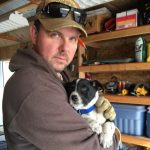
 get another dog. They went to see what was available, and came up with a male Border Collie/Australian Cattle Dog mix that they named Scout. When a dog is a puppy, you don’t always know how they will turn out, but Scout and Barry are best buddies. Scout loves Kelli too, but he likes hanging out with Barry a lot. They “work” together on whatever Barry is doing, because Scout is a little bit like his owner. He just wants to hangout and ride in trucks. He would probably work on them too…if he knew how. Today is Barry’s birthday. Happy birthday Barry!! Have a great day!! We love you!!
get another dog. They went to see what was available, and came up with a male Border Collie/Australian Cattle Dog mix that they named Scout. When a dog is a puppy, you don’t always know how they will turn out, but Scout and Barry are best buddies. Scout loves Kelli too, but he likes hanging out with Barry a lot. They “work” together on whatever Barry is doing, because Scout is a little bit like his owner. He just wants to hangout and ride in trucks. He would probably work on them too…if he knew how. Today is Barry’s birthday. Happy birthday Barry!! Have a great day!! We love you!!
 In 1536, Henry VIII decided to conquer Ireland and bring it under crown control. From that time forward until 1920, all of Ireland was a part of the British Isles. The British Isles is a geographical term which includes two large islands, Great Britain and Ireland, and 5,000 small islands, most notably the Isle of Man which has its own parliament and laws. Today, only Northern Ireland remains, as part of the United Kingdom.
In 1536, Henry VIII decided to conquer Ireland and bring it under crown control. From that time forward until 1920, all of Ireland was a part of the British Isles. The British Isles is a geographical term which includes two large islands, Great Britain and Ireland, and 5,000 small islands, most notably the Isle of Man which has its own parliament and laws. Today, only Northern Ireland remains, as part of the United Kingdom.
For the most part, the Irish War of Independence, also called the Anglo-Irish War, was a guerrilla conflict and most of the fighting was conducted on a small scale by the standards of conventional warfare. Although there were some large-scale encounters between the Irish Republican Army and the state forces of the United Kingdom. The Auxiliary Division of the Royal Irish Constabulary (ADRIC), generally known as the Auxiliaries or Auxies, was a paramilitary unit of the Royal Irish Constabulary (RIC) during the War. It was set up in July 1920 and made up of former British Army officers, most of whom came from Great Britain. Its role was to conduct counter-insurgency operations against  the Irish Republican Army (IRA). The Auxiliaries became infamous for their reprisals on civilians and civilian property in revenge for IRA actions, the best known example of which was the burning of Cork city in December 1920. The Black and Tans officially the Royal Irish Constabulary Special Reserve, was a force of temporary constables recruited to assist the Royal Irish Constabulary (RIC) during the war. The force was the brainchild of Winston Churchill, then British Secretary of State for War. Recruitment began in Great Britain in late 1919. Thousands of men, many of them British Army veterans of World War I, answered the British government’s call for recruits.
the Irish Republican Army (IRA). The Auxiliaries became infamous for their reprisals on civilians and civilian property in revenge for IRA actions, the best known example of which was the burning of Cork city in December 1920. The Black and Tans officially the Royal Irish Constabulary Special Reserve, was a force of temporary constables recruited to assist the Royal Irish Constabulary (RIC) during the war. The force was the brainchild of Winston Churchill, then British Secretary of State for War. Recruitment began in Great Britain in late 1919. Thousands of men, many of them British Army veterans of World War I, answered the British government’s call for recruits.
The war continued on and by November 1920, around 300 people had been killed in the conflict. Then, there 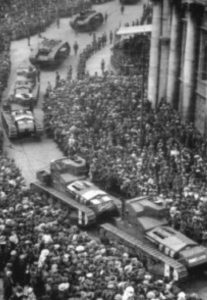 was an escalation of violence beginning on Bloody Sunday, November 21, 1920, fourteen British intelligence operatives were assassinated in Dublin in the morning. Then, in retaliation, the afternoon the RIC opened fire on a crowd at a Gaelic football match in the city, killing fourteen civilians and wounding 65. A week later, seventeen Auxiliaries were killed by the IRA in the Kilmichael Ambush in County Cork. In retaliation, the British government declared martial law in much of southern Ireland. The centre of Cork City was burnt out by British forces on December 10, 1920. Violence continued to escalate over the next seven months, when 1,000 people were killed and 4,500 republicans were interned. Much of the fighting took place in Munster (particularly County Cork), Dublin and Belfast, which together saw over 75 percent of the conflict deaths. Violence in Ulster, especially Belfast, was notable for its sectarian character and its high number of Catholic civilians.
was an escalation of violence beginning on Bloody Sunday, November 21, 1920, fourteen British intelligence operatives were assassinated in Dublin in the morning. Then, in retaliation, the afternoon the RIC opened fire on a crowd at a Gaelic football match in the city, killing fourteen civilians and wounding 65. A week later, seventeen Auxiliaries were killed by the IRA in the Kilmichael Ambush in County Cork. In retaliation, the British government declared martial law in much of southern Ireland. The centre of Cork City was burnt out by British forces on December 10, 1920. Violence continued to escalate over the next seven months, when 1,000 people were killed and 4,500 republicans were interned. Much of the fighting took place in Munster (particularly County Cork), Dublin and Belfast, which together saw over 75 percent of the conflict deaths. Violence in Ulster, especially Belfast, was notable for its sectarian character and its high number of Catholic civilians.
 When most of us think of outer space, we think of a place that is quiet and still, like floating through a vacuum. I suppose that some of that is true, but while things do float around in space, they can also crash into other things floating in space. I don’t know if collisions in space make a sound, but I suspect they do. I don’t know how two objects can collide quietly, but maybe the sound does occur, and then doesn’t carry. Whether there is a sound or not, those space collisions are not soft hits, and damage can occur.
When most of us think of outer space, we think of a place that is quiet and still, like floating through a vacuum. I suppose that some of that is true, but while things do float around in space, they can also crash into other things floating in space. I don’t know if collisions in space make a sound, but I suspect they do. I don’t know how two objects can collide quietly, but maybe the sound does occur, and then doesn’t carry. Whether there is a sound or not, those space collisions are not soft hits, and damage can occur.
After NASA first put the Hubble telescope in orbit in 1990, scientists realized that the telescope’s primary mirror had a flaw called spherical aberration. Basically, the outer edge of the mirror was ground too flat by a depth of 2.2 microns. That is about as thick as one-fiftieth the thickness of a human hair. I don’t know how that could make much difference, but this aberration resulted in images that were fuzzy because some of the light from the objects being studied was being scattered. While this was not caused by other objects in space, it had to be repaired anyway. The Corrective Optics Space Telescope Axial Replacement, or COSTAR, was developed as an effective means of countering the effects of the flawed shape of the mirror. COSTAR was a telephone booth sized instrument which placed 5 pairs of corrective mirrors, some as small as a nickel coin, in front of the Faint Object Camera, the Faint Object Spectrograph and the Goddard High Resolution Spectrograph. The fix worked, and while this was not the only repair job done on the Hubble Telescope, it was the first.
NASA arranged a repair mission SM1, or Shuttle Mission: STS-61 to make the repair. The mission took place on 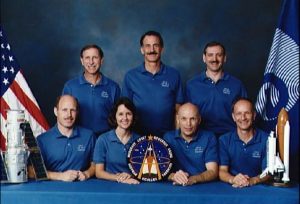 December 2-13, 1993 in the Shuttle Endeavor. The mission, however, was not just to fix a flaw in the original design, which would have been logical when we think of how much we depend on the Hubble Telescope, but the crew also installed and replaced other components including: Solar Arrays, Solar Array Drive Electronics (SADE), Magnetometers, Coprocessors for the flight computer, Two Rate Sensor Units, Two Gyroscope Electronic Control Units, and a GHRS Redundancy Kit. The crew included Commander Richard O. Covey, Pilot Kenneth D. Bowersox, Payload Commander F. Story Musgrave and Mission Specialists Kathryn C. Thornton, Claude Nicollier, Jeffrey A. Hoffman and Tom Akers. The mission successfully made the repairs to Hubble.
December 2-13, 1993 in the Shuttle Endeavor. The mission, however, was not just to fix a flaw in the original design, which would have been logical when we think of how much we depend on the Hubble Telescope, but the crew also installed and replaced other components including: Solar Arrays, Solar Array Drive Electronics (SADE), Magnetometers, Coprocessors for the flight computer, Two Rate Sensor Units, Two Gyroscope Electronic Control Units, and a GHRS Redundancy Kit. The crew included Commander Richard O. Covey, Pilot Kenneth D. Bowersox, Payload Commander F. Story Musgrave and Mission Specialists Kathryn C. Thornton, Claude Nicollier, Jeffrey A. Hoffman and Tom Akers. The mission successfully made the repairs to Hubble.
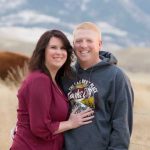 My niece, Jessi Sawdon is a woman of many talents. First and foremost, she is a great wife and mother. Her husband Jason is a Wyoming Highway Patrolman, and Jessi make a perfect partner for him in all work related events, as he does for her. Together they have a beautiful little girl named Adelaide. Jessi stays quite busy keeping up with Adelaide, who is a little girl on the go. Adelaide is starting to talk very well, and she had begun to remind her grandparents of her mommy as she was growing up. My sister, Allyn Hadlock, Jessi’s mom tells me that she finds many of the things Adelaide says and does funny, because Adelaide does some of the same things Jessi used to do at that age. If Jessi wants Adelaide to do something she will tell Adelaide, “I’ll do it” and then Adelaide is SURE to do it! We used to use that same reverse psychology on Jessi and she would do what we wanted every time! Ally says it is hilarious! I think that Jessi learned from her parents, and now that knowledge is working for her with Adelaide too, in quite a comical way, I think.
My niece, Jessi Sawdon is a woman of many talents. First and foremost, she is a great wife and mother. Her husband Jason is a Wyoming Highway Patrolman, and Jessi make a perfect partner for him in all work related events, as he does for her. Together they have a beautiful little girl named Adelaide. Jessi stays quite busy keeping up with Adelaide, who is a little girl on the go. Adelaide is starting to talk very well, and she had begun to remind her grandparents of her mommy as she was growing up. My sister, Allyn Hadlock, Jessi’s mom tells me that she finds many of the things Adelaide says and does funny, because Adelaide does some of the same things Jessi used to do at that age. If Jessi wants Adelaide to do something she will tell Adelaide, “I’ll do it” and then Adelaide is SURE to do it! We used to use that same reverse psychology on Jessi and she would do what we wanted every time! Ally says it is hilarious! I think that Jessi learned from her parents, and now that knowledge is working for her with Adelaide too, in quite a comical way, I think.

Jessi’s sister, Lindsay says that Jessi is the coordinator of all the things. That made me laugh, because my mind went back to a younger Jessi, as she arranged things with the other children. One time was when she was trying to get her cousin Michelle to cooperate in a picture, and when things didn’t go well, Jessi glared at Michelle. That made a better picture than the planned take Jessi was trying to accomplish. Lindsay told me that Jessi was very good at “coordinating us.” I think I have to agree with Lindsay on that. Lindsay also said “As a sister, she is always good at making you laugh, cheering you up if your down, and just calling to talk. She is the best at movie quotes.”
Jessi takes great pride in her community, and Casper is very blessed to have her promotion it. She has been working with David Street Station, professionally. Jessi is a marketing professional at Hinge Studio Marketing and Communications. She also designs websites and does pictures and videos for the company and their clients. One nice thing for Jessi at this time in her life and career, is the fact that she gets to work from home.  The owners of Hinge Studio Marketing and Communications are two friends of Jessi’s. The company is fairly new, but they doing very well and they are already very busy. Aside from being a great marketing professional for the Davis street station, Jessi loves to attend all the fun things going on there, and to make sure everyone knows what’s going on in Casper. She really is an advocate for all things Casper. Yes, they are clients for her work, but they are so much more than that to Jessi. And Jessi always knows what is going on in Casper and she is seriously involved! She loves to shop local, eat local and play local! Jason and Adelaide are frequently with Jessi at events they promote, so it is a fun time for the whole family. today is Jessi’s birthday. Happy birthday Jessi!! Have a great day!! We love you!!
The owners of Hinge Studio Marketing and Communications are two friends of Jessi’s. The company is fairly new, but they doing very well and they are already very busy. Aside from being a great marketing professional for the Davis street station, Jessi loves to attend all the fun things going on there, and to make sure everyone knows what’s going on in Casper. She really is an advocate for all things Casper. Yes, they are clients for her work, but they are so much more than that to Jessi. And Jessi always knows what is going on in Casper and she is seriously involved! She loves to shop local, eat local and play local! Jason and Adelaide are frequently with Jessi at events they promote, so it is a fun time for the whole family. today is Jessi’s birthday. Happy birthday Jessi!! Have a great day!! We love you!!
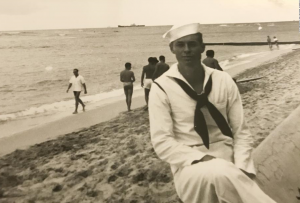 When someone is killed in a war, we are always in the hope that they will be found quickly, and identified by their friends, so that their remains can be returned to their family for a proper burial. Unfortunately, that is not always the case. Nevertheless, we hope that the time passing between death and identification is a very short amount. Unfortunately that was not the case with Carl David Dorr, who was one of the 429 sailors and Marines killed on board the USS Oklahoma when it was sunk in the Japanese attack on Pearl Harbor. Only 35 people on the ship were positively identified and buried in the years immediately following the December 7, 1941, military strike, according to the Defense Department. The unidentified remains were buried as unknowns at the National Memorial Cemetery of the Pacific, which fills the Punchbowl crater in Honolulu. For 77 years, Dorr’s family has been waiting and wondering what became of him. They knew he was at Pearl Harbor, and that he
When someone is killed in a war, we are always in the hope that they will be found quickly, and identified by their friends, so that their remains can be returned to their family for a proper burial. Unfortunately, that is not always the case. Nevertheless, we hope that the time passing between death and identification is a very short amount. Unfortunately that was not the case with Carl David Dorr, who was one of the 429 sailors and Marines killed on board the USS Oklahoma when it was sunk in the Japanese attack on Pearl Harbor. Only 35 people on the ship were positively identified and buried in the years immediately following the December 7, 1941, military strike, according to the Defense Department. The unidentified remains were buried as unknowns at the National Memorial Cemetery of the Pacific, which fills the Punchbowl crater in Honolulu. For 77 years, Dorr’s family has been waiting and wondering what became of him. They knew he was at Pearl Harbor, and that he  was on the USS Oklahoma. The bodies were there, but they could not be identified. I can’t think of anything that would be more frustrating than that. Sadly, the wait was beyond long…it was 77 years. When I think about his family, first losing their 27 year old son, and then not being able to bury their son. They died without that closure.
was on the USS Oklahoma. The bodies were there, but they could not be identified. I can’t think of anything that would be more frustrating than that. Sadly, the wait was beyond long…it was 77 years. When I think about his family, first losing their 27 year old son, and then not being able to bury their son. They died without that closure.
Carl’s family, like most American families, gathered around the radio on December 7, 1941. The news was grim. They didn’t know much yet, but they knew Carl’s ship had been attacked. With sinking hearts, they tied to hold out hope that by some miracle, he had survived. Then, they received the crushing news that he was missing in action…then, presumed dead. After the Defense Department began DNA collection in 2009, his family provided samples in hopes that one day it would help identify Carl’s body, his nephew said. His mother kept an heirloom photograph in her living room “so she could keep an eye on him,” Thomas Dorr said. She was  able to see her son every day, even if he never made it home at all. And, of course, he never did, at least during their lifetime.
able to see her son every day, even if he never made it home at all. And, of course, he never did, at least during their lifetime.
Recently, the DNA provided for identification purposed, finally paid off. Dorr’s body was finally identified, and he was going home at last. About 15 of Dorr’s relatives walked onto the tarmac of South Carolina’s Greenville-Spartanburg International Airport. As they watched, a flag-draped coffin was lowered from the plane into a hearse. “There was nothing but dead silence,” Carl’s 70-year-old nephew, Thomas Dorr, who lives in St. Johns, Florida, told CNN. “I knew that what I was experiencing was history.” Carl David Dorr was finally going to be laid to rest, and how fitting that his funeral would be held on the same day that he died, December 7, but 77 years after the day he died…Pearl Harbor Day.
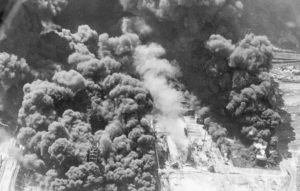 Coal mining, especially underground coal mining can be a dangerous occupation. No matter how hard the safety coordinators tried to keep people safe, and no matter how stringent the safety regulations were, accidents happened and sometimes, lives were lost. Coal mining was especially dangerous when coal dust ignited. Explosions were the main cause of death in the mines,especially the underground mines. And that was just the instantaneous death. Breathing the dust caused a slow death over time. In 1883, the creation of the Norfolk and Western Railway opened a gateway to the untapped coalfields of southwestern West Virginia. New mining towns sprung up in the region practically overnight, with European immigrants and African Americans from the south pouring into southern West Virginia looking for work in the new industry. By the late 19th century, West Virginia was a national leader in the production of coal,but the state fell far behind other major coal-producing states in regulating the mining conditions. In addition to poor economic conditions, West Virginia had a higher mine death rate than any other state. Nationwide, a total of 3,242 Americans were killed in mine accidents in 1907, but no one accident could compare to the accident that was about to unfold as the year neared its end. No on was prepared for the horror that was to come in Monongah in December.
Coal mining, especially underground coal mining can be a dangerous occupation. No matter how hard the safety coordinators tried to keep people safe, and no matter how stringent the safety regulations were, accidents happened and sometimes, lives were lost. Coal mining was especially dangerous when coal dust ignited. Explosions were the main cause of death in the mines,especially the underground mines. And that was just the instantaneous death. Breathing the dust caused a slow death over time. In 1883, the creation of the Norfolk and Western Railway opened a gateway to the untapped coalfields of southwestern West Virginia. New mining towns sprung up in the region practically overnight, with European immigrants and African Americans from the south pouring into southern West Virginia looking for work in the new industry. By the late 19th century, West Virginia was a national leader in the production of coal,but the state fell far behind other major coal-producing states in regulating the mining conditions. In addition to poor economic conditions, West Virginia had a higher mine death rate than any other state. Nationwide, a total of 3,242 Americans were killed in mine accidents in 1907, but no one accident could compare to the accident that was about to unfold as the year neared its end. No on was prepared for the horror that was to come in Monongah in December.
The worst mining accident in United States occurred on December 6, 1907. The mine was the Monongah Coal 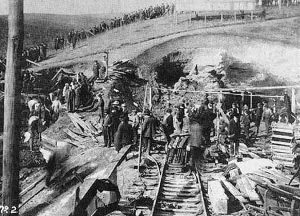 Mine in West Virginia’s Marion County. on that date, an explosion in a network of mines owned by the Fairmont Coal Company in Monongah killed 362 coal miners. Officially, there were 367 men in the two mines, but the actual number was much higher because officially registered workers often took their children and other relatives into the mine to help. No one thought of the practice as dangerous. At 10:28am an explosion occurred that killed most of the men inside the mine instantly. The blast went on to cause considerable damage to both the mine and the surface. The ventilation systems, necessary to keep fresh air supplied to the mine, were destroyed along with many rail cars and other equipment. The explosion blew the timbers supporting the roof down causing further issues when the roof collapsed. Investigators believed that an electrical spark or one of the miners’ open flame lamps ignited coal dust or methane gas, but the cause of the explosion was not determined.
Mine in West Virginia’s Marion County. on that date, an explosion in a network of mines owned by the Fairmont Coal Company in Monongah killed 362 coal miners. Officially, there were 367 men in the two mines, but the actual number was much higher because officially registered workers often took their children and other relatives into the mine to help. No one thought of the practice as dangerous. At 10:28am an explosion occurred that killed most of the men inside the mine instantly. The blast went on to cause considerable damage to both the mine and the surface. The ventilation systems, necessary to keep fresh air supplied to the mine, were destroyed along with many rail cars and other equipment. The explosion blew the timbers supporting the roof down causing further issues when the roof collapsed. Investigators believed that an electrical spark or one of the miners’ open flame lamps ignited coal dust or methane gas, but the cause of the explosion was not determined.
Time was of the essence to bring people out of a mine accident alive, because at that time they didn’t know much about restoring the air supply to the people trapped below. The first volunteer rescuers entered the two mines 25 minutes after the initial explosion. The biggest threats to rescuers are the various fumes, particularly “blackdamp”, a mix of carbon dioxide and nitrogen that contains no oxygen, and “whitedamp”, which is carbon monoxide. The lack of breathing apparatus at the time made venturing into these areas impossible. Rescuers could only stay in the mine for 15 minutes at a time. In a vain effort to protect themselves, some of the miners 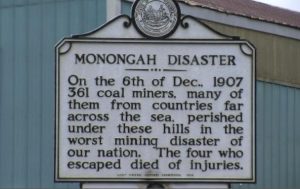 tried to cover their faces with jackets or other pieces of cloth. While this may filter out particulate matter, it would not protect the miners in an oxygen-free environment. The toxic fume problems were compounded by the infrastructural damage caused by the initial explosion…mines require large ventilation fans to prevent toxic gas buildup, and the explosion at Monongah had destroyed all of the ventilation equipment. The inability to clear the mine of gases transformed the rescue effort into a recovery effort. One Polish miner was rescued and four Italian miners escaped. Following the accident, the United Mine Workers of America labor union and sympathetic legislators forced safety regulations that brought a steady decline in death rates in West Virginia and elsewhere.
tried to cover their faces with jackets or other pieces of cloth. While this may filter out particulate matter, it would not protect the miners in an oxygen-free environment. The toxic fume problems were compounded by the infrastructural damage caused by the initial explosion…mines require large ventilation fans to prevent toxic gas buildup, and the explosion at Monongah had destroyed all of the ventilation equipment. The inability to clear the mine of gases transformed the rescue effort into a recovery effort. One Polish miner was rescued and four Italian miners escaped. Following the accident, the United Mine Workers of America labor union and sympathetic legislators forced safety regulations that brought a steady decline in death rates in West Virginia and elsewhere.
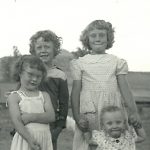 My mother-in-law, Joann Schulenberg was the eldest of her parents three living children. Her older brother Everett passed away at birth. The second living child was Linda Cole, who was born 15 years after her older sister. Following Linda, youngest sister, Margaret was born three years later. It was almost like having two separate families, because Joann was practically grown up by the time her younger siblings arrived. In reality, Linda and Margee grew up with nieces and nephews, some of whom were closer in age to them than their own sister was, and there sister was almost like a second mother to them.
My mother-in-law, Joann Schulenberg was the eldest of her parents three living children. Her older brother Everett passed away at birth. The second living child was Linda Cole, who was born 15 years after her older sister. Following Linda, youngest sister, Margaret was born three years later. It was almost like having two separate families, because Joann was practically grown up by the time her younger siblings arrived. In reality, Linda and Margee grew up with nieces and nephews, some of whom were closer in age to them than their own sister was, and there sister was almost like a second mother to them.
Linda grew up and married Bobby Cole on December 29, 1965. Their marriage was blessed with a daughter, Sheila and a son, Patrick, both of whom are married and have children of their own now. Linda and Bobby ran a hotel in Kennebec, South Dakota for most of the years while their children were growing up. They loved the small town of Kennebec, and the social scene in the area. For a number of years, they were a part of a square dance club. I remember all their great dance clothes, and how much they loved being part of that club. I think it was the most fun they had in a long time.
 Unfortunately, the economy in Kennebec wasn’t doing too well, and after they lost their hotel to a fire, they decided that it was time for a change. The decided to move to Winnemucca, Nevada. they thought that the gambling might be just the ticket for them. The both found work in the casinos there, and dabbled in gambling on their time off. They really enjoyed their lives in Winnemucca. They were in a warmer climate, and far away from the harsh South Dakota winters. They would live out the remainder of their lives in Winnemucca. Bobby passed away on May 30, 2014, of cancer. After his passing, Linda seemed content to stay in Winnemucca, until her passing on September 22, 2016 of a heart attack. We miss them both very much. Today would have been Linda’s 71st birthday. Happy birthday in heaven Linda. We love you.
Unfortunately, the economy in Kennebec wasn’t doing too well, and after they lost their hotel to a fire, they decided that it was time for a change. The decided to move to Winnemucca, Nevada. they thought that the gambling might be just the ticket for them. The both found work in the casinos there, and dabbled in gambling on their time off. They really enjoyed their lives in Winnemucca. They were in a warmer climate, and far away from the harsh South Dakota winters. They would live out the remainder of their lives in Winnemucca. Bobby passed away on May 30, 2014, of cancer. After his passing, Linda seemed content to stay in Winnemucca, until her passing on September 22, 2016 of a heart attack. We miss them both very much. Today would have been Linda’s 71st birthday. Happy birthday in heaven Linda. We love you.
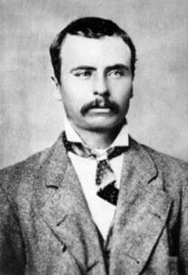 Deadwood, South Dakota maybe started out as an illegal town, but once it was established, there came a need for things like mail, supplies, and transportation, the latter of which brought the need for a stagecoach. The biggest problem with the stagecoach was the fact that the lawless element in the area thought it would be an easy target for robbery. The stagecoaches became a ride for the very brave. Soon it became apparent that the stagecoaches were going to need some protection.
Deadwood, South Dakota maybe started out as an illegal town, but once it was established, there came a need for things like mail, supplies, and transportation, the latter of which brought the need for a stagecoach. The biggest problem with the stagecoach was the fact that the lawless element in the area thought it would be an easy target for robbery. The stagecoaches became a ride for the very brave. Soon it became apparent that the stagecoaches were going to need some protection.
Daniel “Boone” May was born in Missouri in 1852. Going by the name of “Boone,” he was the son of Samuel and Nancy May, the seventh of nine children. Later, he moved with his family to Bourbon County, Kansas, where his father worked as a farmer. In 1876, “Boone” and his older brother moved to Cheyenne, Wyoming, where they worked in the freight business. During this time, the Black Hills were crawling with road agents and hostile Sioux Indians.It was a dangerous time to be working along the roadways in that area. Nevertheless, May did very well there, and he decided to buy a ranch between the Platte River and Deadwood by the end of that year.
“Boone’s” bravery and work ethic soon came to the attention of the stagecoach service, and he was soon recruited as a shotgun messenger for the Cheyenne and Black Hills Stage & Express Company. He also served as the station keeper at Robbers’ Roost in Wyoming Territory. Within just a few years, “Boone” was thought to have been in at least eight shooting incidents with outlaws. Many people said that he was the fastest gun in the Dakotas. His adventures soon became well known.
One of the first hold-ups “Boone” was involved in was in August, 1877, when a Deadwood Coach was intercepted at Robber’s Roost. On this occasion, even though “Boone” wanted to fight it out, he decided to lay down his weapons, because a woman and child were in the coach. The robbers made away with the passenger’s money, weapons and personal property. While they lost their things, I’m sure they decided that it was best to walk away with their lives. A short time later, “Boone” ran into one of the bandits, a man named Prescott Webb, in Deadwood and within no time, gunfire erupted between the two men. Though “Boone” was hit in the left wrist, he returned fire as Webb jumped on a horse to make his getaway. “Boone’s” shots hit Webb in the shoulder, and the horse several times, bringing it down. Webb was quickly arrested by Sheriff Seth Bullock and later that day, Webb’s companions who had aided in the robbery, were also arrested.
In 1878, stagecoaches known as “treasure coaches” were running regularly between Deadwood and Cheyenne. Their cargo was strong boxes filled with gold, as well as the U.S. Mail. These “treasure coach” stages often became the target of bandits, and after one of these coaches was held up on July 2, 1878, the U.S. Postal Service appointed a number of special agents to bring the outlaws to justice. “Boone” and ten other men were soon appointed as U.S. Deputy Marshals and equipped with good horses and ammunition. One of “Boone’s” first encounters with bandits as a U.S. Deputy Marshal occurred on the night of September 13, 1878. He and another messenger were trailing a Cheyenne bound coach which was approached by bandits near Old Woman’s Creek in the Wyoming Territory. “Boone” and another deputy, Zimmerman surprised the outlaws and shooting erupted. “Boone” wounded one bandit named Frank Towle and the others fled empty handed. Leaving their Towle wounded on the ground, the two messengers went after the other bandits but were unable to capture them. When they returned to the robbery site, Towle was gone.
On September 26, 1878, when “Boone” and other messengers were waiting to escort a coach at Beaver Station on the Wyoming-Dakota border, but the stage failed to show up. They went in search of the coach, and met another messenger who told them it had been robbed and a passenger killed. “Boone” quickly joined a posse to go after the outlaws, but they escaped. The following month, “Boone” learned of the hiding place of a robber named Archie McLaughlin and quickly went after him and his gang. Capturing them north of Cheyenne, the outlaws were sent under guard to Deadwood on the northbound coach. Unfortunately, the stage never make it, because on November 3, 1878, it was stopped by vigilantes who hanged Archie McLaughlin and another man named Billy Mansfield. The next month, “Boone” was in a posse that brought in a robber named Tom Price. The bandit tried to escape, and was wounded, and then was brought in. Late in 1879, “Boone” was sent to assist Special Agent William Llewellyn in the capture of a mail robber named Curley Grimes. They tracked the outlaw  to Elk Creek, located halfway between Rapid City and Fort Meade where they arrested him. That night, as the group neared Fort Meade, Grimes attempted to escape and was shot and killed by “Boone” and Llewellyn. By this time, “Boone” had made such a reputation for himself that he became a target for many of the outlaws who repeatedly tried to assassinate him, unsuccessfully. “Boone” also worked as a messenger for the Black Hills Placer Mining Company in the summer of 1880, and was said to have killed at least one robbers during this time. A short time later, “Boone” resigned from the company and left the Black Hills. He turned up in Santiago, Chili in 1883. He shot an army officer in 1891, he fled to Brazil. He died of yellow fever in Rio de Janeiro in 1910.
to Elk Creek, located halfway between Rapid City and Fort Meade where they arrested him. That night, as the group neared Fort Meade, Grimes attempted to escape and was shot and killed by “Boone” and Llewellyn. By this time, “Boone” had made such a reputation for himself that he became a target for many of the outlaws who repeatedly tried to assassinate him, unsuccessfully. “Boone” also worked as a messenger for the Black Hills Placer Mining Company in the summer of 1880, and was said to have killed at least one robbers during this time. A short time later, “Boone” resigned from the company and left the Black Hills. He turned up in Santiago, Chili in 1883. He shot an army officer in 1891, he fled to Brazil. He died of yellow fever in Rio de Janeiro in 1910.

